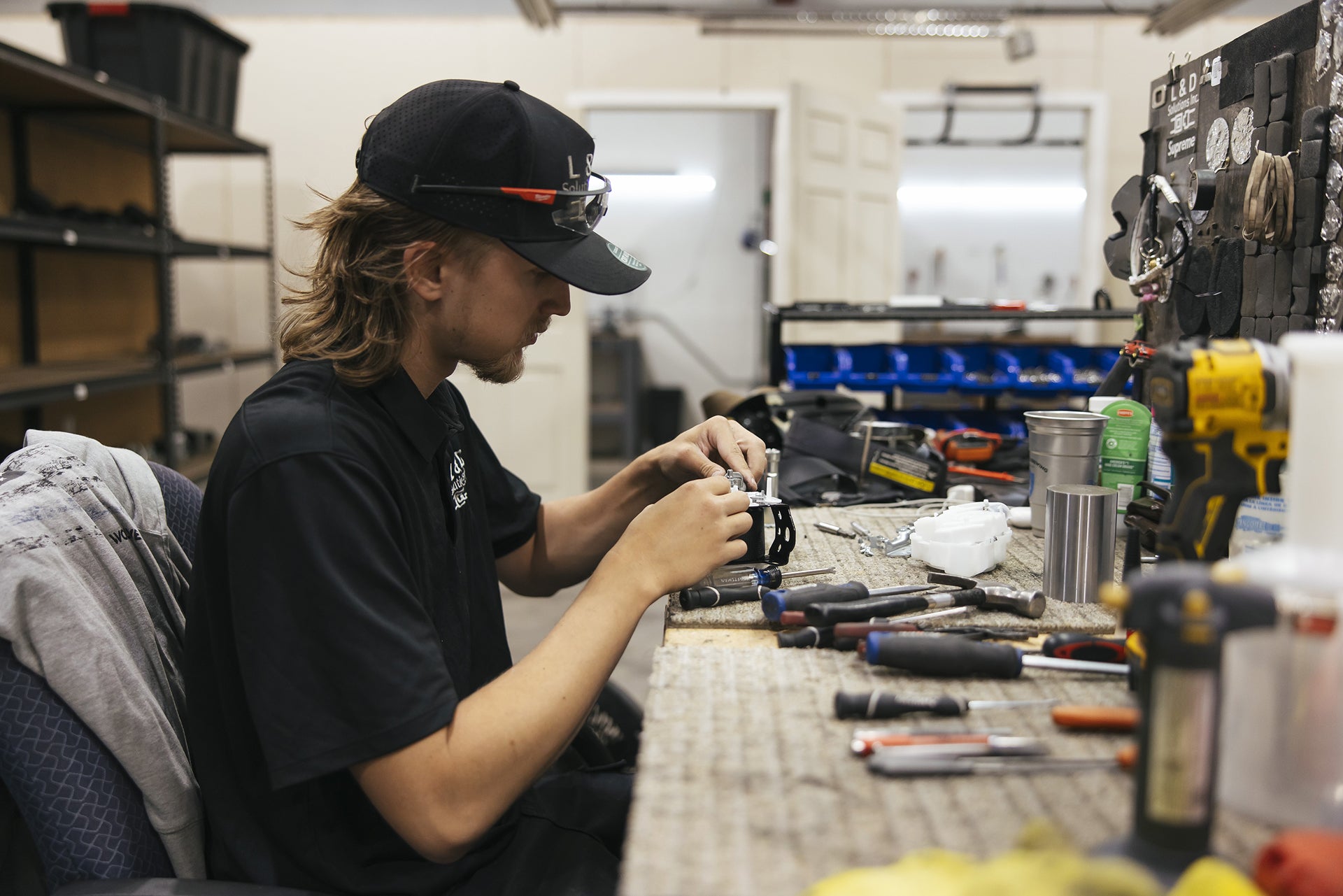When it comes to car safety, most people think about airbags, crumple zones, and anti-lock brakes. But here’s the thing: none of those matter if your seat belt doesn’t do its job. That’s where seat belt pretensioners come in,a quiet but powerful technology that can make the difference between a close call and a catastrophic injury.
At L&D Solutions, we specialize in seat belt repair and reconditioning, and we’ve seen firsthand how crucial pretensioners are to crash safety. In this post, we’ll break down how they work, why they matter, and what to do if yours fail.
What Is a Seat Belt Pretensioner?
A seat belt pretensioner is a component built into the retractor system of your seat belt. Its job is simple but critical: remove slack from the seat belt during a crash.
The moment your car senses a collision is happening, a small pyrotechnic charge or mechanical system activates the pretensioner. This rapidly tightens the belt, pulling you back into your seat, just before or as the airbag deploys.
Think of it like this:
- Without a pretensioner, your seat belt might have a bit of looseness or delay before holding you firm.
- With a pretensioner, that slack disappears instantly. You’re held securely in position at the exact moment it matters most.
Why Do Pretensioners Matter?
Crash energy is brutal. In a high-speed impact, your body wants to keep moving forward. Your seat belt is the one thing standing between you and the dashboard, or worse, the windshield.
Pretensioners give your seat belt a head start. Instead of waiting until you’re already lunging forward, they proactively cinch the belt. This:
- Keeps you in the safest position for airbag deployment
- Reduces chest and head movement
- Prevents “submarining” (sliding under the lap belt)
- Lowers the chance of hitting interior structures
In short: it’s one of the few milliseconds in life where timing really is everything.
How Pretensioners Work: A Closer Look
There are two main types of pretensioners:
1. Pyrotechnic Pretensioners
These use a small explosive charge, similar to the one used in airbags. When triggered:
- Gas is released.
- The retractor spins rapidly.
- The belt tightens by up to 3 inches in a fraction of a second.
Pros: Fast, reliable
Cons: One-time use, requires professional reset or replacement
2. Mechanical Pretensioners
Often used in addition to, or instead of, pyrotechnic systems. These rely on:
- Centrifugal forces from a sudden deceleration
- A spring-loaded mechanism to tighten the belt
Pros: May be reusable in minor collisions
Cons: Not as fast or strong as pyrotechnic versions
Some modern vehicles use both systems for layered protection.
Real-World Example: Why Every Inch Matters
Imagine you’re driving 45 mph. That’s about 66 feet per second.
In the instant of a crash:
- Your airbag inflates in roughly 30 milliseconds
- Your body, without a seat belt, would move several inches forward before the airbag even deploys
Now imagine your seat belt pretensioner activates:
- It pulls the belt tight before you move too far
- Your chest hits the airbag at the right angle and speed
The difference? It could mean walking away with bruises instead of broken bones, or worse.
How to Know if Your Pretensioner Has Deployed
After a crash, yes, even a minor one, your pretensioner may be spent. But here’s the tricky part: you won’t always notice.
Signs your pretensioner may have deployed:
- The airbag light is on
- The seat belt no longer retracts fully
- There's visible damage or unusual looseness
- A diagnostic scan shows a pretensioner fault code
At L&D Solutions, we often see vehicles come in where the airbags weren’t triggered, but the pretensioner was. And if it’s not repaired, your seat belt might not protect you in the next crash.
Can Pretensioners Be Repaired?
Yes, and it’s what we do best.
Most dealerships will tell you to replace the entire seat belt assembly, which can cost hundreds or even thousands depending on your vehicle.
But our technicians can:
- Reset deployed pyrotechnic pretensioners
- Replace faulty or damaged components
- Test and calibrate the unit for proper tension
- Preserve OEM integrity at a fraction of the cost
We follow industry safety standards and use specialized equipment to ensure your seat belts function like new.
When to Get Your Pretensioner Inspected
Not sure if your seat belts are working correctly? Here’s when you should get them checked:
- After any collision, even if the airbags didn’t deploy
- If the seat belt is slow to retract
- If the airbag warning light is on
- After buying a used vehicle (you never know its true history)
- If you’re restoring a car or making safety upgrades
You don’t want to find out your pretensioner is faulty when it’s too late.
The Bigger Picture: Safety Is Layered
Pretensioners are part of a larger passive safety system that includes:
- Airbags
- Crumple zones
- Seatbelt load limiters
- Rigid passenger cabins
Each element plays a role, but they all depend on you being in the right position, and that’s what pretensioners ensure.
It’s a layered approach, and pretensioners are the foundation.
Small Part, Huge Impact
Here’s what most drivers don’t realize:
A seat belt without a working pretensioner is incomplete.
Pretensioners aren’t just “nice to have.” They’re essential for modern crash protection. That tiny explosion under your seat or in your belt assembly? It’s engineered to save your life.
At L&D Solutions, we’ve restored thousands of seat belts for customers across the country. Whether it’s a single belt or a full post-collision repair, our mission is simple: get your safety system back to factory condition, quickly, affordably, and correctly.
Want Peace of Mind?
Let us inspect your seat belts.
If your pretensioner has deployed, or your seat belt isn’t working like it should, we’ll repair it fast and get you back on the road with full protection.
Call or message us today to get started.
Your safety is worth it.




Leave a comment
This site is protected by hCaptcha and the hCaptcha Privacy Policy and Terms of Service apply.